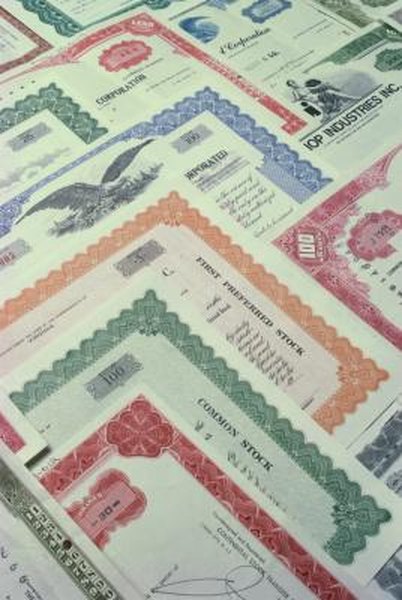How to Sell Stock on Limit Price Orders
Limit orders give you greater control over the price shares sell at.
Jupiterimages/Photos.com/Getty Images
When buying or selling stock, you often pay or receive the price that shares are trading at when the trade is executed. This isn't always ideal, especially if prices are fluctuating. However, taking advantage of other trading options can help. For example, limit orders let you set the price you want, and they're executed only when trading reaches your price. This is especially useful when selling stock, as it ensures that if the trade goes through, you'll receive the amount you want.
Research the stock that you wish to sell, and determine the price you want for your shares. Take into consideration the stock's performance, growth estimates, recent changes or acquisitions by the company, and other factors that can affect stock pricing. The price you set for your limit order will be higher than the current price, so you need to determine how much higher you think it will go.
Step 2Determine how many shares of the stock you wish to sell at your desired price. You can sell all of the stock that you own in the company, or you can sell only a portion of it so that you remain invested in the company while converting some of your current investment into cash at the price you want.
Step 3Decide how long you want the limit order to remain in effect. Limit orders can be set up as "day orders" that remain in effect for only one trading day, or as "GTC" -- good until canceled -- orders that remain in effect for longer.
Step 4Contact your broker, or log into your online brokerage account to initiate a new trade. Set up the trade as a limit option to sell the number of shares you previously decided on, at the price you chose. Let the broker know whether you want the limit order set up as a day order or GTC.
Step 5Check your account or contact your broker to see whether your limit order was successful. If the market price you want meets the limit order price and stays at or above that price for a long enough period for your trade to be executed, then your shares will sell. If it doesn't meet the price or drops back below the price before the trade can be executed, then you will retain the shares.
References
Warnings
- Limit orders are not guaranteed to go through, and they will not be executed if share prices don't reach the limit that you set.
- Check with your broker to see how his fees on limit orders differ from his fees on other trades. Many brokers charge higher fees for limit orders than for market orders.
Writer Bio
Born in West Virginia, Jack Gerard now lives in Kentucky. A writer and editor with more than 10 years of experience, he has written both articles and poetry for publication in magazines and online. A former nationally ranked sport fencer, Gerard also spent several years as a fencing coach and trainer.

